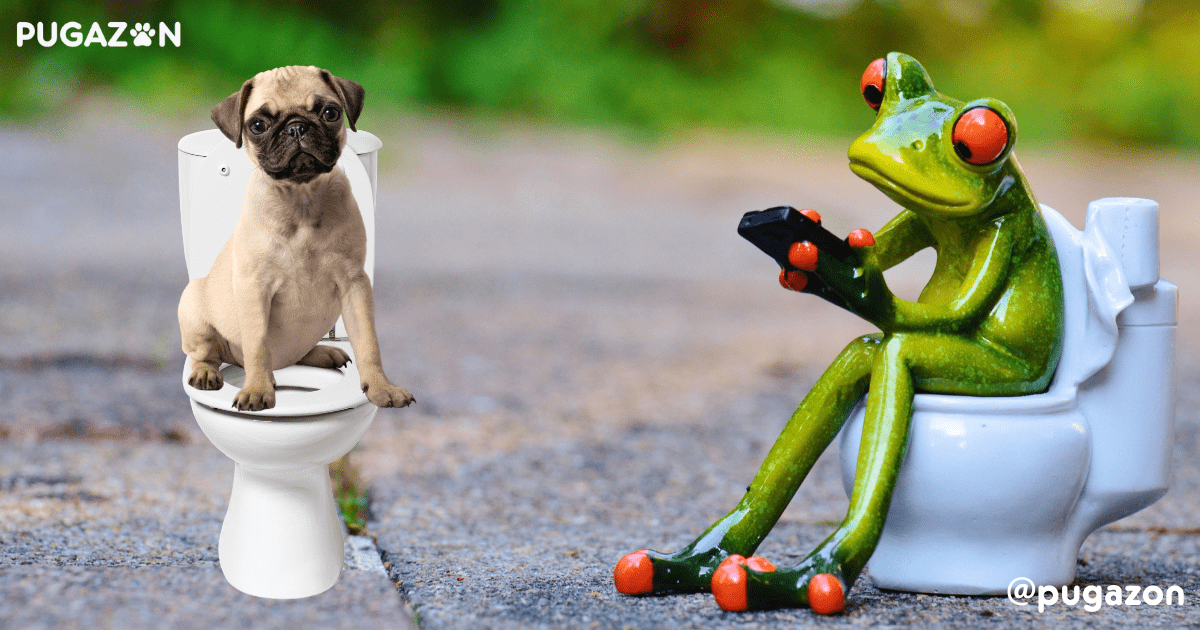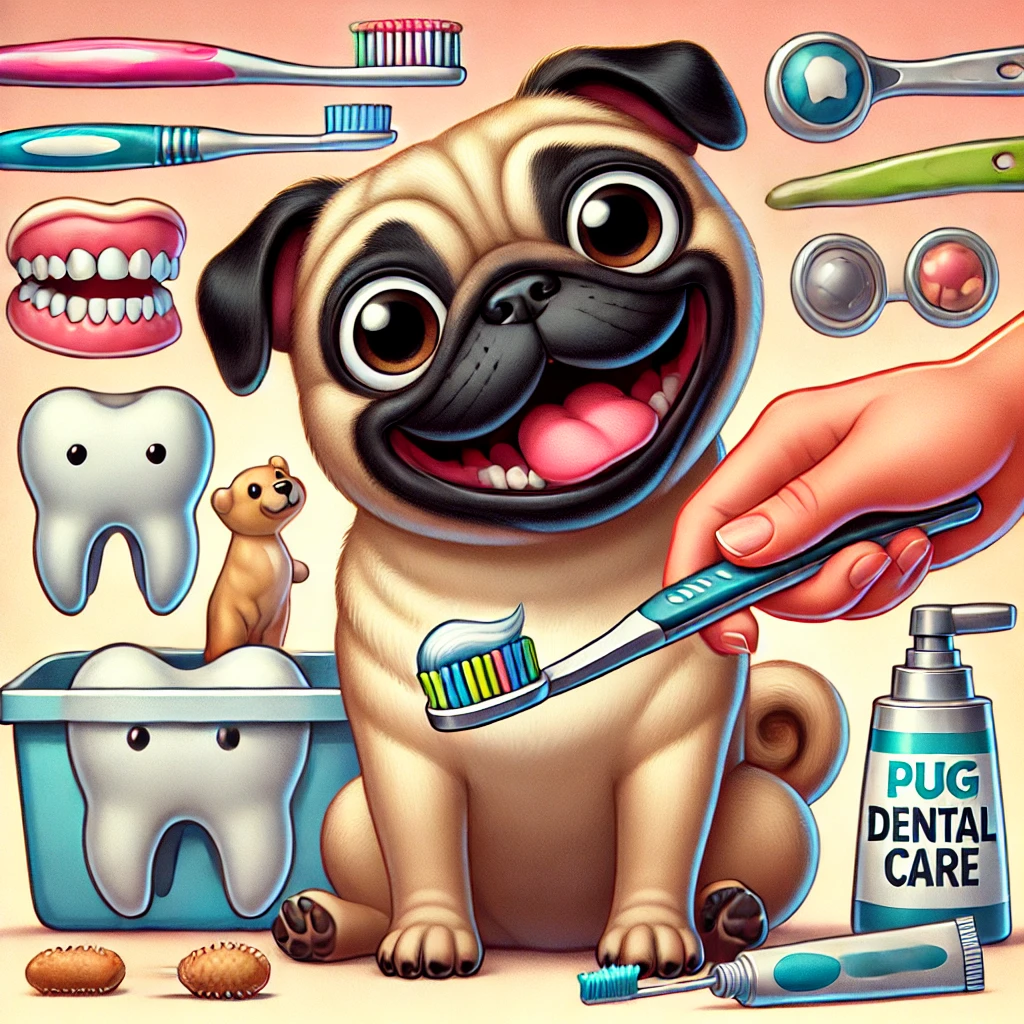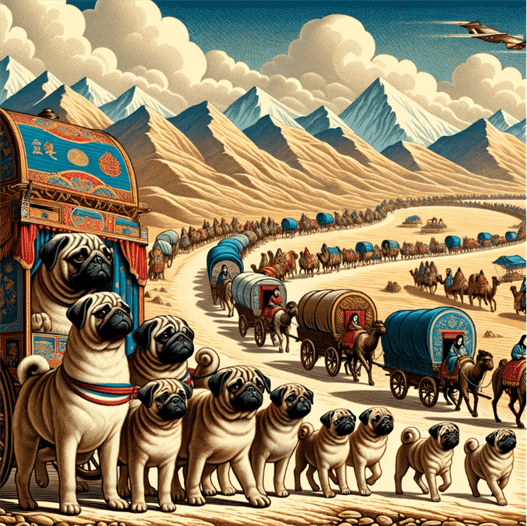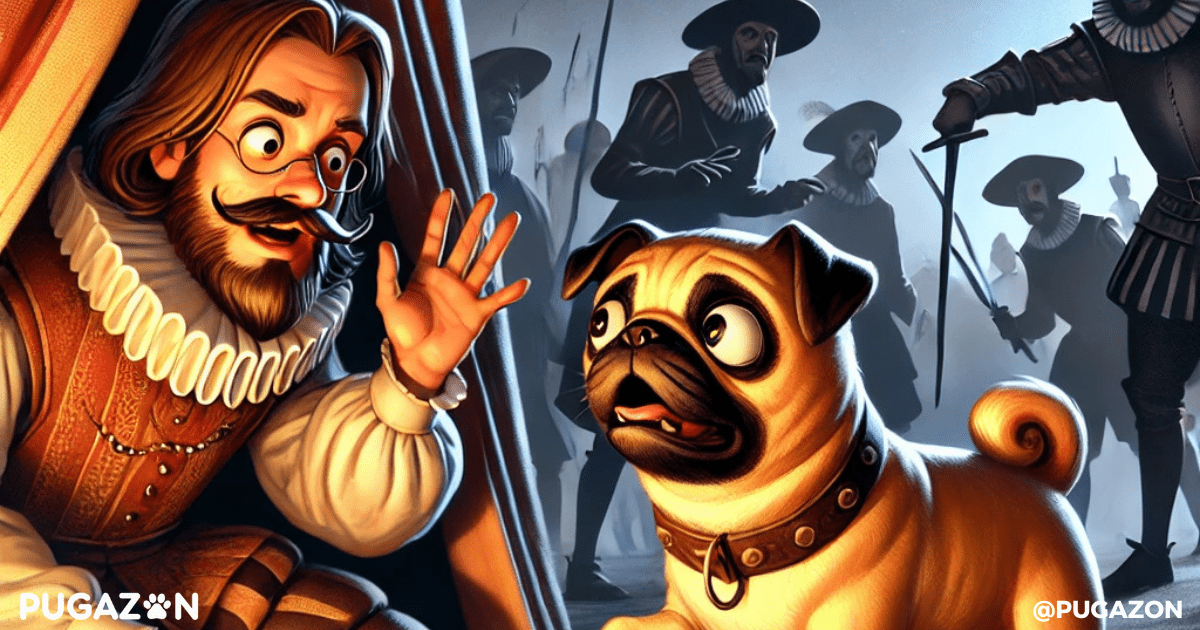Why Potty Training a Pug Can Be Challenging
Potty training a pug can be a challenging task, as this breed is known for its strong-willed nature and occasional stubbornness. Pugs, while affectionate and intelligent, often require more patience during training due to their independent streak. They are sensitive and highly motivated by rewards, but they can also be easily distracted, which complicates potty training. Understanding the nuances of a pug’s personality and adapting your training methods accordingly can make a significant difference in the success of the process.
One of the main challenges pug owners face during potty training is their pug’s small bladder size. Pugs have shorter digestive tracts and smaller bladders compared to larger breeds, which means they need more frequent bathroom breaks, especially when they’re young. Additionally, pugs are prone to indoor accidents if not closely monitored, which makes consistency and routine critical during the potty training phase.
Another common challenge is pugs’ sensitivity to extreme weather conditions. As a brachycephalic breed, pugs are more sensitive to heat and cold, which can make outdoor potty training difficult during certain seasons. Many pugs refuse to go outside when it’s too hot, too cold, or rainy, leading to indoor accidents and setbacks in the training process. This makes it even more important for owners to be creative in how they approach potty training, especially if they live in climates with extreme temperatures.
In this guide, we’ll explore effective strategies for potty training your pug, from understanding their unique habits to creating a consistent routine. We’ll also address common challenges, including setbacks, and offer practical solutions to ensure potty training success.

Understanding Your Pug's Bathroom Habits
Before diving into the potty training process, it’s essential to understand the unique bathroom habits of your pug. Pugs, like all dogs, develop routines when it comes to relieving themselves, and recognizing these patterns can make training easier.
Frequency of Bathroom Breaks
Pugs, especially puppies, have small bladders and typically need to relieve themselves frequently. For puppies under six months, expect bathroom breaks every 2-3 hours, while adult pugs may need to go out every 4-5 hours during the day. Always take your pug outside after eating, drinking, playing, or waking up from a nap.
How Food and Water Impact Bathroom Habits
Your pug’s eating and drinking schedule significantly impacts when they need to go out. As a general rule, a pug will need to relieve themselves 15-30 minutes after eating or drinking. Feeding your pug at consistent times each day will help you predict when they will need to go outside.
Age of Pug | Bathroom Frequency | Key Times to Take Outside |
Puppy (<6 months) | Every 2-3 hours | After meals, naps, playtime |
Adult Pug | Every 4-5 hours | After meals, morning, before bedtime |
Monitoring Bathroom Cues
Pugs often give subtle cues when they need to relieve themselves. Some signs include sniffing around the room, circling, or standing by the door. Recognizing these cues early will help prevent accidents. It’s important to establish a designated bathroom spot in your yard or neighborhood and take your pug to the same spot every time. This consistency helps reinforce the connection between going to the bathroom and that specific area.
Predictability is Key
Pugs thrive on routine, and creating a predictable potty schedule is key to training success. If you notice that your pug tends to need the bathroom at specific times, make sure to take them out at those intervals. Over time, your pug will learn to anticipate their bathroom breaks, making accidents less likely.

Step-by-Step Guide to Potty Training Your Pug
Step 1: Create a Designated Potty Area
The first step in potty training your pug is designating a specific area where they will relieve themselves. This could be a spot in your yard or a pee pad in your home (for indoor training). The idea is to help your pug associate that particular location with going to the bathroom.
Step 2: Set a Potty Schedule
Consistency is essential for success. Create a schedule that works with your pug’s bathroom needs. Puppies will need to go out more frequently, especially after eating, drinking, or napping. Set a timer to ensure you’re taking your pug out every 2-3 hours (for puppies) or every 4-5 hours (for adults). Always take your pug outside at the same times each day—first thing in the morning, after meals, and before bedtime.
Step 3: Use Positive Reinforcement
Every time your pug successfully goes to the bathroom outside, reward them immediately with praise and a small treat. This positive reinforcement encourages them to repeat the behavior. Timing is crucial—be sure to reward them as soon as they finish to help them make the connection between the action and the reward.
Step 4: Supervise and Limit Freedom Indoors
Until your pug is fully potty trained, it’s important to supervise them closely indoors to prevent accidents. You can use baby gates to restrict access to certain areas of the house or keep your pug in the same room as you. Watch for signs that your pug needs to go out (such as sniffing, circling, or pacing), and take them outside immediately.
Step 5: Stay Consistent and Patient
Training takes time, especially with pugs, who may have a stubborn streak. Stick to your schedule, be consistent with rewards, and stay patient. Avoid punishment if your pug has an accident indoors—this can create anxiety and make the potty training process more difficult.
Recognizing the Signs Your Pug Needs to Go
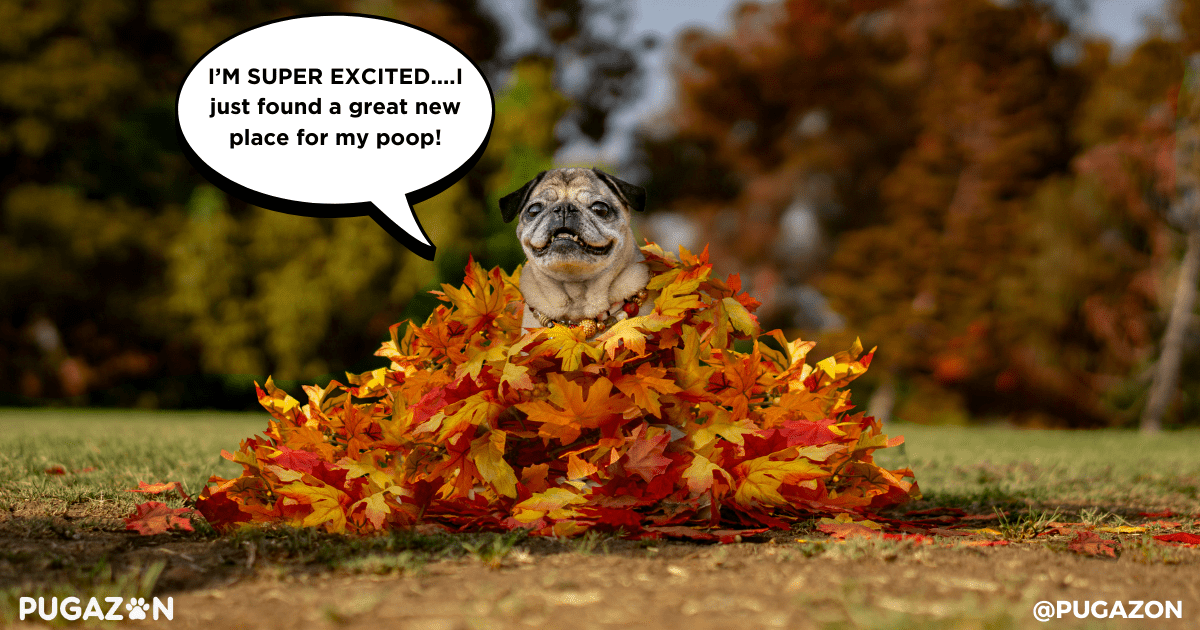
Recognizing when your pug needs to go outside is a key part of successful potty training. Pugs often exhibit specific behaviors when they need to relieve themselves, and understanding these signals can help you avoid accidents in the house. Each pug may have slightly different cues, but there are common signs to watch out for.
Common Behavioral Signs
Pugs give physical and behavioral cues when they need to go outside. Knowing how to spot these signs will allow you to act quickly and take them outside before they have an accident.
- Sniffing the Floor: When your pug begins to sniff around the floor, particularly in areas where they’ve previously had accidents, it’s a clear sign that they’re searching for a spot to go. This behavior often means they need to relieve themselves soon.
- Circling: A common pre-potty behavior in dogs, including pugs, is circling in one area. If you notice your pug walking in tight circles, especially near doors or corners, take them outside immediately.
- Whining or Barking at the Door: Some pugs will stand near the door, whining or barking when they need to go out. This is often combined with scratching or pawing at the door.
Sudden Restlessness or Pacing: Pugs may become restless, pacing back and forth or going to their usual potty spots (such as a pee pad or near the door) when they need to go. Watch for any sudden changes in behavior, especially after eating or drinking.
Time-Based Patterns
Pugs typically develop predictable bathroom habits based on their eating, drinking, and sleeping schedule. Understanding when your pug is most likely to need a bathroom break can help you anticipate their needs.
Trigger | Bathroom Likelihood |
After Eating/Drinking | 10-20 minutes after meals or water |
After Waking Up | Immediately after waking from a nap |
After Playtime | Soon after play or physical activity |
Before Bed | Take your pug out before bedtime |
Helping Your Pug Signal You
While recognizing your pug’s natural signals is important, you can also train your pug to signal you when they need to go outside. Here are a few methods to help your pug communicate:
- Bell Training: Hang a bell by the door and train your pug to ring it when they need to go out. Each time you take them outside, ring the bell with their paw or nose before opening the door. Over time, they’ll learn to ring the bell themselves when they need a bathroom break.
- Verbal Commands: Use a consistent verbal cue such as “potty” or “outside” before each bathroom break. Eventually, your pug will associate the word with the action and may bark or whine when they hear it.
Last update on 2025-02-11 / * Affiliate links / Image source: Amazon Product Advertising API
Common Potty Training Mistakes and How to Avoid Them
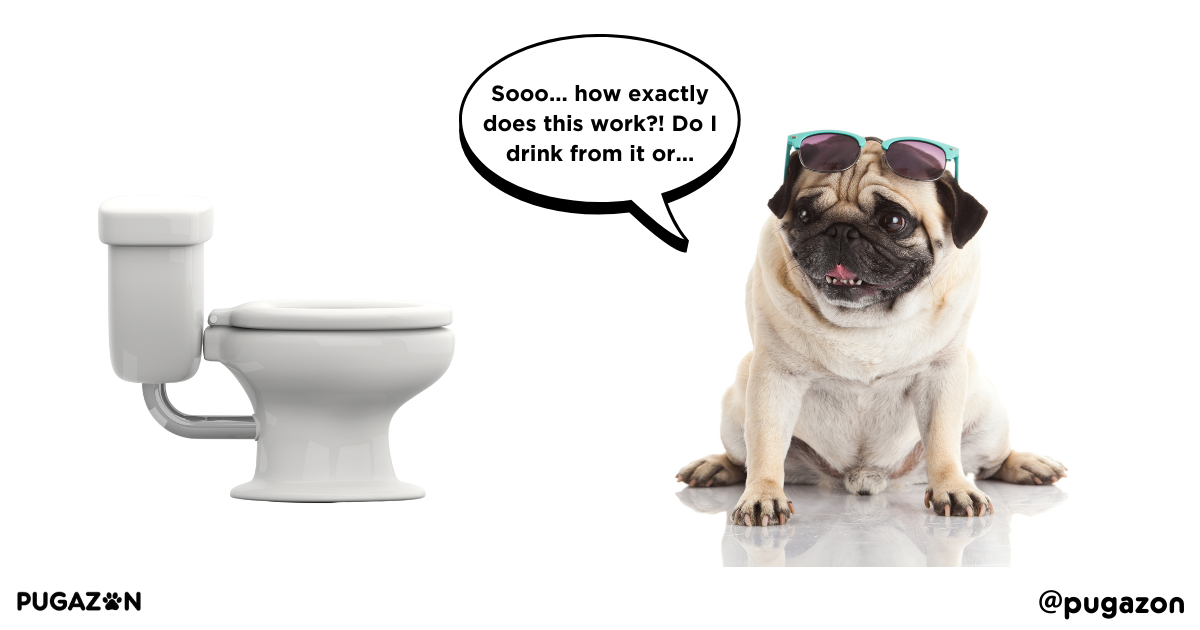
Even the most dedicated pug owners can make mistakes during potty training, but being aware of these common pitfalls will help you avoid them and set your pug up for success.
Inconsistent Routine
Pugs thrive on consistency, and failing to stick to a regular potty routine is one of the biggest mistakes. Inconsistent schedules confuse your pug and make it harder for them to understand when and where they’re supposed to go.
- Solution: Stick to a regular feeding and potty schedule. Take your pug out at the same times every day, especially after meals, playtime, and naps. This consistency will reinforce the idea that there are designated times and places for bathroom breaks.
Not Supervising Enough
Allowing your pug too much freedom in the house before they are fully potty trained can lead to accidents. Pugs need close supervision during the training process to prevent unwanted behaviors from developing.
- Solution: Supervise your pug closely and keep them in a confined space when you can’t watch them (such as a playpen or a crate). Gradually increase their freedom as they become more reliable.
Punishing Accidents
Yelling at or punishing your pug after an accident can lead to anxiety and make the training process more difficult. Pugs are sensitive to tone and body language, and punishment may cause them to hide or avoid going to the bathroom in front of you.
- Solution: If your pug has an accident, clean it up without making a fuss. Instead of punishment, focus on reinforcing good behavior by praising and rewarding your pug when they go outside.
Mistake | Why It Happens | How to Avoid It |
Inconsistent potty routine | Lack of a set schedule | Stick to a regular feeding and bathroom schedule |
Punishing for accidents | Frustration after an indoor accident | Focus on positive reinforcement instead of punishment |
Not taking your pug out frequently enough | Misjudging your pug’s bladder control | Take your pug out every 2-3 hours and after key activities |
Expecting results too quickly | Impatience with the process | Be patient and expect training to take several weeks to months |
Creating a Consistent Potty Routine for Your Pug
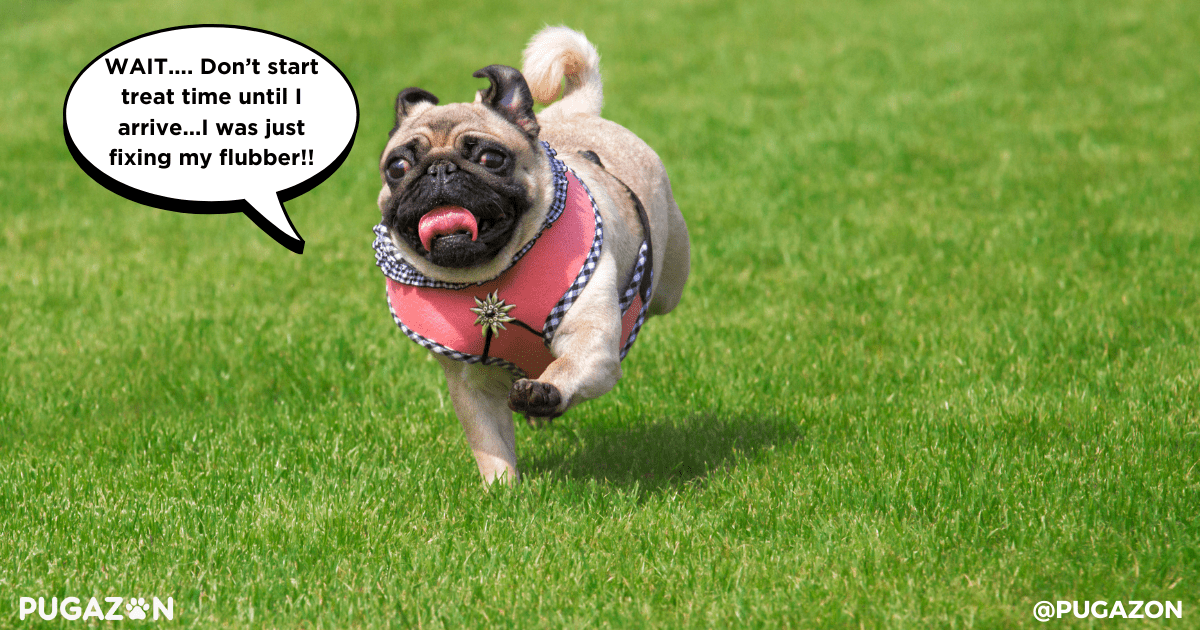
A consistent routine is crucial for potty training success. Pugs are creatures of habit, and creating a structured daily schedule helps them understand when to expect bathroom breaks.
Setting a Daily Routine
Start by structuring your pug’s day around regular potty breaks. Here’s an example of a daily potty routine for a pug puppy:
Time | Activity |
7:00 AM | Wake up and go outside |
7:30 AM | Breakfast followed by potty break |
9:30 AM | Potty break |
12:00 PM | Lunchtime followed by potty break |
2:30 PM | Potty break |
5:00 PM | Dinner followed by potty break |
7:30 PM | Potty break |
10:00 PM | Final potty break before bed |
For adult pugs, you can space potty breaks every 4-5 hours. Over time, your pug will come to expect these breaks and will be less likely to have accidents indoors.
Consistent Potty Spot
Taking your pug to the same outdoor spot each time helps them associate that location with bathroom breaks. This creates a sense of routine and familiarity, making it easier for them to understand what’s expected when you go outside.
Sticking to Feeding Times
Feeding your pug at the same times each day can help regulate their bathroom habits. Pugs tend to need the bathroom shortly after eating, so consistent meal times can lead to more predictable potty breaks.
Always Stay Up to Date
Indoor Potty Training for Apartment Dwellers
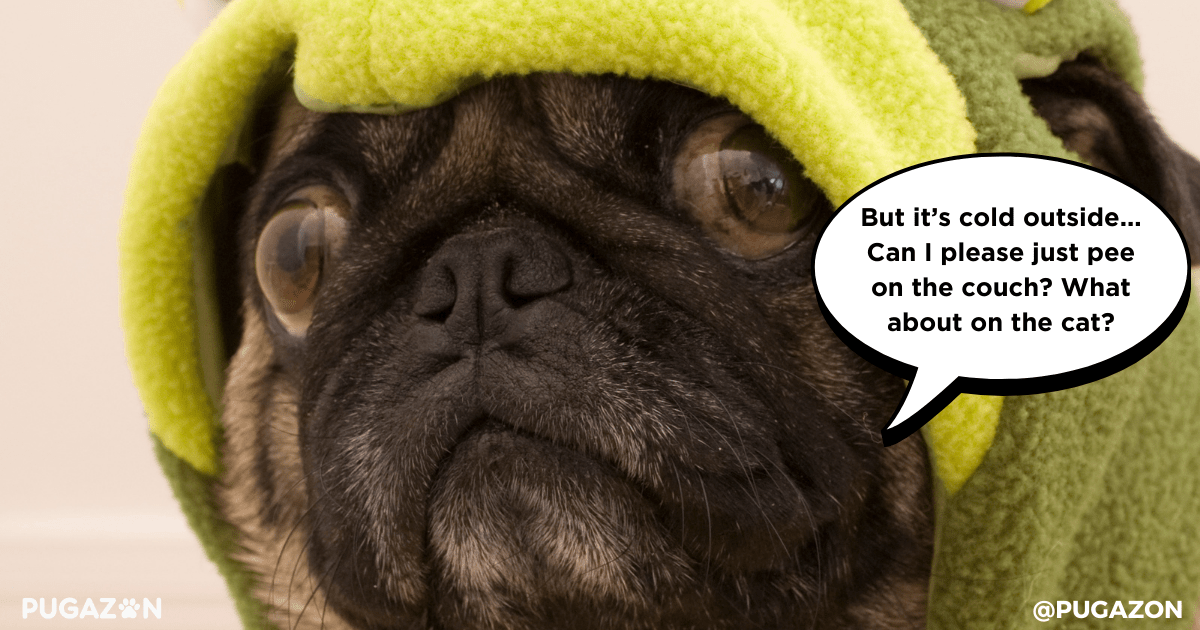
Potty training a pug in an apartment or urban setting comes with its own set of challenges. Limited outdoor access, weather conditions, and living in a smaller space can make traditional outdoor potty training difficult. However, there are effective indoor potty training methods you can use to ensure your pug has a designated bathroom area even if you don’t have immediate access to a yard or garden.
Using Pee Pads for Indoor Training
Pee pads are an excellent solution for apartment dwellers who may not have easy access to an outdoor potty area. Here’s how to effectively train your pug to use pee pads:
- Step 1: Choose a Designated Spot
Select a specific spot in your home for the pee pad, preferably in an area where your pug spends most of their time. Once you’ve chosen the spot, keep the pad there consistently. - Step 2: Introduce the Pee Pad
Introduce the pee pad to your pug by encouraging them to sniff and explore it. Place the pad near where your pug usually goes to the bathroom if they’ve had accidents indoors. - Step 3: Reinforce Positive Behavior
When your pug uses the pee pad successfully, immediately reward them with treats and praise. Over time, they’ll understand that using the pad is the correct behavior.
Indoor Dog Potties
For those who live in apartments or buildings with limited outdoor access, indoor dog potties are a great alternative to pee pads. These potties often mimic outdoor grass or turf, providing a more natural experience for your pug.
- Grass Pads or Synthetic Turf: Some indoor potties use synthetic turf to simulate grass, which can be particularly useful if you plan to eventually transition your pug to outdoor potty training. These pads are washable and reusable, making them an eco-friendly option.
- Litter Box Systems: Some owners opt for litter box systems designed for small dogs. These systems include absorbent material, similar to cat litter, that makes it easier to clean up after your pug.
Balcony or Patio Potty Training
If you live in an apartment with a balcony or patio, you can train your pug to use a specific spot on the balcony as their designated potty area. This method allows for a bit of outdoor potty training without having to leave your apartment.
- Setting Up a Potty Spot: Set up a grass pad or pee pad on your balcony and make it clear that this is the designated potty area. Use verbal cues like “go potty” each time you take your pug to this spot.
- Reinforce Behavior: Just as with indoor potty pads, reward your pug immediately after they use the designated balcony area.
Pros and Cons of Indoor Potty Training
While indoor potty training offers convenience, it’s important to consider both the pros and cons.
Pros | Cons |
Ideal for apartment dwellers with limited outdoor access. | Can be harder to transition from indoor pads to outdoor training. |
Convenient during bad weather (rain, snow). | Some pugs may become too reliant on indoor potty options. |
Reduces accidents if outdoor trips aren’t possible. | Pads and potties need regular cleaning to avoid odors. |
Crate Training and Potty Training: How They Work Together
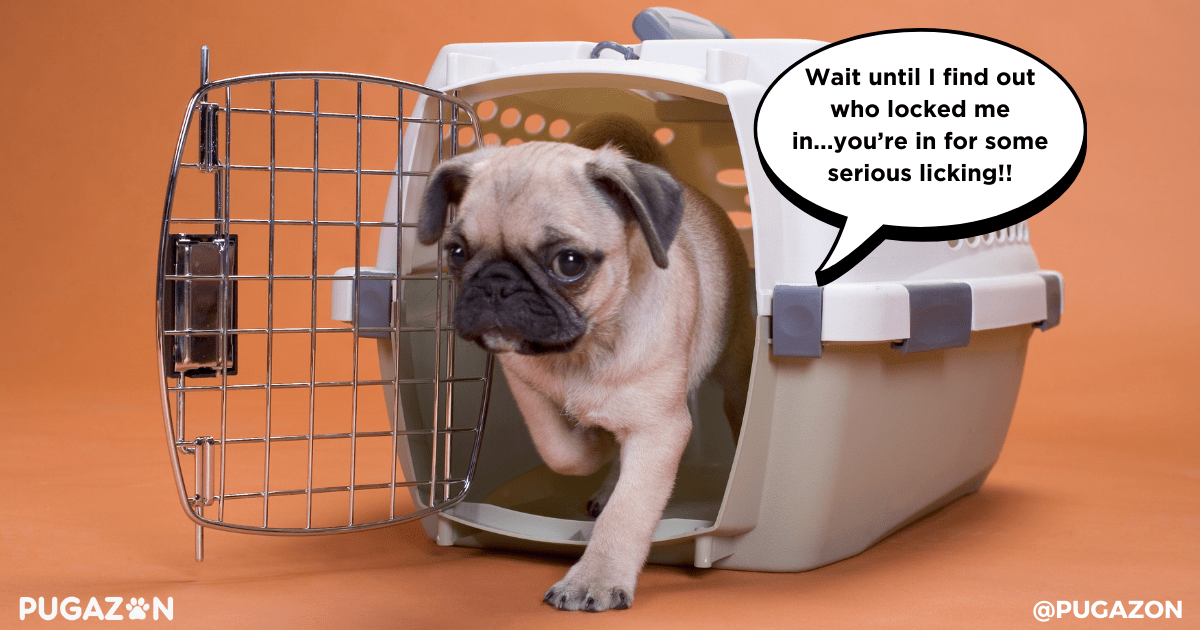
Crate training is one of the most effective tools for potty training your pug. Pugs, like most dogs, are naturally inclined to keep their sleeping area clean, which makes the crate an excellent way to establish bladder control and a regular potty routine. Here’s how to use crate training as part of your potty training strategy.
Setting Up the Crate for Potty Training
Start by choosing the right size crate for your pug. The crate should be large enough for your pug to stand up, turn around, and lie down comfortably, but not so large that they can use one end as a bathroom and the other end for sleeping.
- Crate Size: A crate that is too big can lead to accidents inside, so use a divider if your pug is still a puppy and will grow into the crate. A 24-30 inch crate is usually sufficient for most pugs.
How Crate Training Helps with Potty Training
Crate training helps in two key ways:
- Encourages Bladder Control: Since pugs are unlikely to soil their sleeping space, they’ll naturally learn to hold their bladder for longer periods when in the crate.
- Establishes a Potty Routine: Crating your pug at night or when you’re not home can create predictable potty schedules, as they’ll need to go outside immediately after being let out of the crate.
Step-by-Step Guide to Crate Training and Potty Training
- Step 1: Gradually Introduce the Crate
Start by introducing your pug to the crate in a positive way. Leave the door open and allow them to explore. Use treats and praise to create positive associations with the crate. - Step 2: Create a Potty Schedule
Set a schedule that includes regular trips outside immediately after your pug leaves the crate. Stick to this routine to reinforce the idea that potty time follows crate time. - Step 3: Limit Time in the Crate
Don’t leave your pug in the crate for long periods of time, especially if they’re still learning bladder control. For puppies, keep crate sessions to 2-3 hours at a time, while adult pugs can be crated for longer stretches (up to 4-5 hours). - Step 4: Night Time Potty Breaks
During the initial stages of potty training, take your pug out for a bathroom break in the middle of the night if needed. Over time, they’ll be able to hold their bladder throughout the night.
How to Reinforce Potty Training on Walks or in Public
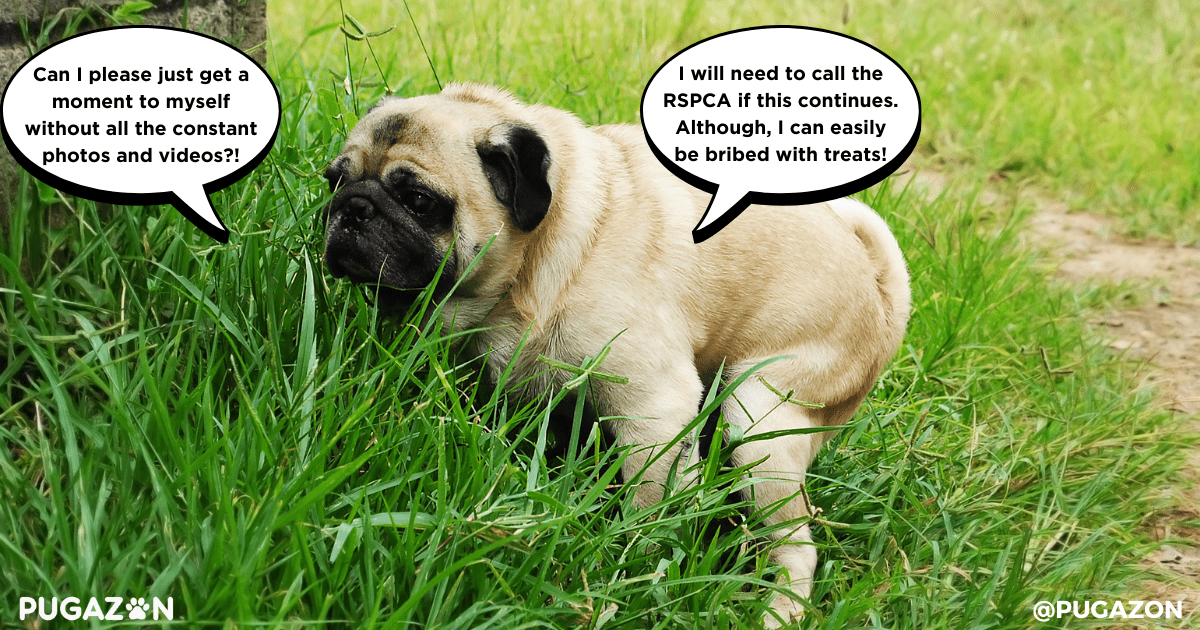
Reinforcing potty training while outside on walks or in public spaces is an important part of ensuring that your pug remains consistent with their bathroom habits in any environment. While your pug may be reliable at home, new sights, sounds, and distractions in public areas can complicate training. Here’s how to keep the training on track when you’re away from home.
Start with Familiar Places
When first introducing public potty training, start in a familiar place, such as a quiet neighborhood street or a park your pug has been to before. Pugs are easily distracted by new environments, so allowing them to practice in a space they know can help them focus on the task at hand.
- Tip: Bring a portable pee pad or use a designated area in the park to reinforce where you want your pug to go. Over time, your pug will understand that bathroom breaks happen outside regardless of location.
Use Verbal Cues to Reinforce Potty Time
Consistency is key when training in public spaces. Use the same verbal cue, such as “go potty,” that you use at home. This helps your pug associate the cue with bathroom time, no matter where they are.
- Tip: Use positive reinforcement immediately after your pug goes to the bathroom in the correct spot, even in public. Carry treats with you and reward them immediately to solidify the connection between the command and the action.
Managing Distractions
In public, pugs are naturally curious about their surroundings. Everything from other dogs to new smells can be a source of distraction. If your pug is too distracted to focus on potty time, it may be helpful to find a quiet spot in the park or wait for a less stimulating moment.
- Tip: Practice leash control by keeping your pug on a short lead when trying to potty in public. This limits the chance for distraction and ensures they focus on the task at hand.
Timing Matters
It’s important to time your walks around your pug’s usual potty schedule. If you know your pug typically needs to go after meals, plan a walk immediately after breakfast or dinner. This will increase the chances of them needing to relieve themselves while on the walk.
- Tip: Always bring extra bags to clean up after your pug and ensure you’re reinforcing good habits both at home and in public. Cleaning up immediately is part of reinforcing responsible behavior for your pug.
Dealing with Potty Training Regression in Public
Sometimes, pugs that are well-trained at home may regress when in public spaces due to distractions, fear, or anxiety. If your pug is having trouble, remain calm and consistent with your approach.
- Solution: Take a step back and return to a more familiar, quieter location to rebuild their confidence. Use the same training methods and routines you use at home to help them regain their focus.
Training Tip | How It Helps |
Use the same verbal cues in public as at home | Helps your pug associate commands with actions in any environment. |
Practice in familiar public places first | Reduces distractions and helps build confidence. |
Reinforce good behavior with treats immediately | Reinforces positive bathroom habits no matter the location. |
Handling Potty Training Setbacks

Even with consistent training, it’s common for pugs to experience setbacks during the potty training process. These setbacks can be caused by a variety of factors, including changes in routine, health issues, or behavioral problems. Here’s how to handle potty training setbacks and get your pug back on track.
Health-Related Setbacks
One of the most common causes of potty training regression is a health issue, such as a urinary tract infection (UTI) or digestive upset. If your pug suddenly starts having frequent accidents indoors after being reliably trained, it’s important to rule out any medical problems.
- Solution: Take your pug to the vet to check for any underlying health issues that could be causing the regression. If a health problem is found, treat the issue and gradually reintroduce the training routine once your pug is feeling better.
Changes in Routine
Pugs are creatures of habit, and any sudden changes in their daily routine, such as a move to a new home, changes in feeding times, or the addition of a new pet, can disrupt their potty training progress.
- Solution: Reinforce the potty training schedule during times of change. Stick to consistent feeding, walking, and potty break times to help your pug adjust to the new routine.
Anxiety or Stress
Stress and anxiety can also contribute to potty training setbacks. Loud noises, separation anxiety, or changes in the household can cause your pug to lose focus on their bathroom habits.
- Solution: Address the source of the anxiety and provide a calm, supportive environment. You can also try crate training or setting up a quiet space for your pug to retreat to when they feel overwhelmed.
Setback | Cause | Solution |
Health-related accidents | Urinary tract infection, digestive issues | Visit the vet to rule out medical problems. |
Accidents after a change in routine | New home, change in schedule | Reinforce the regular potty schedule, provide consistency. |
Stress-induced accidents | Separation anxiety, fear of loud noises | Provide a calm environment, use crate training if necessary. |
Tips for Potty Training Older Pugs

Potty training older pugs can present unique challenges, particularly if they’ve developed bad habits over time or have never been fully potty trained. However, with patience and consistency, older pugs can be successfully trained or retrained. Here are tips specifically for potty training senior pugs.
Recognizing the Challenges of Potty Training Senior Dogs
Older pugs may have more difficulty with potty training due to age-related issues like joint pain, reduced bladder control, or cognitive decline. Understanding these challenges is the first step in successfully training your older pug.
- Solution: If your senior pug has mobility issues, consider using pee pads indoors to reduce the need for frequent trips outside. For bladder control problems, consult your vet for advice on managing incontinence.
Crate Training for Older Pugs
Just like with younger dogs, crate training can be an effective tool for older pugs. However, make sure that the crate is comfortable and easy for your senior pug to enter and exit, especially if they have arthritis or joint pain.
- Tip: Use a crate with a low threshold or a crate pad for added comfort, and place it near your pug’s regular sleeping area to make it feel familiar and welcoming.
Adjusting the Potty Schedule
Older pugs may need more frequent bathroom breaks, especially if they have reduced bladder control. Adjusting their potty schedule to include more frequent trips outside can help reduce accidents indoors.
- Tip: Take your senior pug outside more frequently, especially after naps, meals, or periods of inactivity. This will help them manage their bladder better and reinforce good bathroom habits.
Challenge | Solution |
Reduced bladder control | Increase frequency of potty breaks. |
Joint pain or mobility issues | Use pee pads indoors, provide easy crate access. |
Cognitive decline | Maintain consistency with the potty training schedule. |
Tools and Products to Aid Potty Training
Using the right tools and products can make the potty training process much smoother, especially for pugs who may be more stubborn or require additional reinforcement. Below are some effective products that can help make potty training easier, whether you’re training a puppy or an older pug.
Pee Pads
Pee pads are a staple product for many dog owners, especially those living in apartments or with limited outdoor access. They provide a clean and convenient indoor potty solution while you’re still training your pug or when bad weather makes outdoor trips difficult.
- Recommended Product: Four Paws Wee-Wee Pads
These high-quality pads are absorbent and feature a leak-proof lining, perfect for apartment living or indoor use.
Dog Potty Bells
Training your pug to signal when they need to go out can help prevent accidents. Dog potty bells are an easy way for your pug to communicate that they need a bathroom break.
- Recommended Product: Mighty Paw Smart Bell
This doorbell system is easy to install, and your pug can learn to tap it with their paw or nose when they need to go out.
Enzyme Cleaners
Accidents happen during the potty training process, and it’s essential to clean up any messes thoroughly to prevent your pug from returning to the same spot. Regular cleaners may not fully remove the scent, but enzyme cleaners break down the organic compounds in urine, leaving the area scent-free.
- Recommended Product: Rocco & Roxie Stain and Odor Eliminator
This enzyme-based cleaner effectively removes urine stains and odors, making it easier to maintain a clean environment during training.
Crate for Potty Training
As mentioned earlier, crate training is a powerful tool in potty training. It teaches your pug to hold their bladder by confining them to a safe space when you can’t supervise them.
- Recommended Product: MidWest Homes for Pets Dog Crate
This sturdy, well-ventilated crate comes with a divider panel, making it ideal for growing pugs. The crate size is perfect for pugs and can help establish a routine for potty breaks.
Artificial Grass Potty Pads
For those living in apartments or homes without yards, artificial grass potty pads can serve as a convenient substitute for outdoor potty breaks. These pads mimic the feel of grass and are ideal for pugs who resist using pee pads.
- Recommended Product: PetSafe Pet Loo Portable Dog Potty
The Pet Loo is designed to simulate outdoor potty experiences and is easy to clean, making it a great option for indoor or balcony potty training.
Training Treats
Positive reinforcement is key to successful potty training, and using high-value treats can make a huge difference in keeping your pug motivated.
- Recommended Product: Zuke’s Mini Naturals Dog Treats
These small, low-calorie treats are perfect for rewarding your pug after a successful potty break. They’re healthy, easy to digest, and come in a variety of flavors.
Potty Training Spray
Sometimes, it’s helpful to have a scent cue that signals to your pug where they should go to the bathroom. Potty training sprays can attract your pug to the right spot, whether it’s outside or on a pee pad.
- Recommended Product: Nature’s Miracle House-Breaking Potty Training Spray
This spray is designed to encourage dogs to use a specific spot for relieving themselves. It’s a useful tool for reinforcing consistent potty habits.
Product | How It Helps |
Pee Pads | Offers a convenient indoor potty solution for apartments. |
Dog Potty Bells | Helps pugs communicate their need for a bathroom break. |
Enzyme Cleaners | Removes stains and odors to prevent repeat accidents. |
Crate | Encourages bladder control through crate training. |
Artificial Grass Potty Pads | Simulates outdoor potty conditions for indoor use. |
Training Treats | Provides positive reinforcement for successful potty breaks. |
Potty Training Spray | Helps signal the appropriate bathroom spot for your pug. |
FAQs About Potty Training Pugs
Potty training a pug can take anywhere from a few weeks to a few months, depending on their age, consistency in training, and their temperament. Puppies may learn faster, while older pugs may take a bit longer to adapt to new routines. It’s important to stay consistent and patient throughout the process.
Yes, you can potty train your pug for both indoor and outdoor bathroom habits. Use pee pads or artificial grass indoors and take your pug outside regularly. Over time, your pug will understand that they can go in both designated spots.
Pugs are known to resist going outside in the rain or cold. In such cases, indoor potty training with pee pads or artificial grass can be a good backup. Encourage your pug to use the indoor option if they refuse to go outside, but still try to take them out when the weather improves.
Accidents are often due to lack of supervision or inconsistent potty schedules. Make sure to watch your pug closely and take them out at regular intervals. If they do have an accident, clean it up with an enzyme cleaner to remove any lingering odor.
While crate training isn’t absolutely necessary, it is one of the most effective methods for housebreaking a pug. The crate encourages bladder control and helps create a structured routine for bathroom breaks.
If your pug only goes during walks, you can gradually transition them to going at home by bringing them to the same outdoor spot near your home after meals or naps. Use verbal cues and positive reinforcement to help them understand that they can go to the bathroom in different locations.
Yes, older pugs can be potty trained, though it may take more time and patience. Stick to a consistent routine, and if needed, use tools like pee pads or indoor potties to make it easier for senior dogs with mobility or bladder control issues.
For puppies, take them outside every 2-3 hours. Adult pugs can usually go 4-5 hours between breaks. Always take your pug outside after meals, naps, or playtime, as these are key moments when they’re likely to need a bathroom break.
No, punishing your pug for accidents can create fear and anxiety, which can make potty training harder. Instead, focus on rewarding good behavior when your pug goes to the bathroom in the right spot and clean up any accidents without scolding them.
Yes, tools like potty bells or potty training sprays can be very helpful in teaching your pug when and where to go. Bells help them signal when they need to go outside, while sprays can attract them to the right spot indoors or outdoors.


